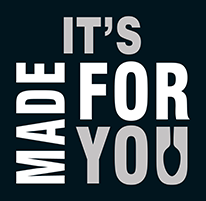One of the most important things to do is follow the speech and language therapist’s swallow recommendations. These may have been provided directly or can be found in a nutrition care plan in a care home, for example.
The person with dysphagia may also need to continue swallow therapy even though they have started to eat and drink. The speech and language therapist will provide a therapy programme and review progress.
The swallow recommendations will include specific signs and symptoms to look out for relevant to the individual with dysphagia. This could include choking, persistent and prolonged bouts of coughing, regurgitation, pouching of food in the mouth, pain or developing a chest infection amongst other signs.
Some of the dysphagia treatment options may be needed at home and this could include adapted food and drink textures using the IDDSI Framework.
IDDSI Framework
This framework is international so that everybody involved in supporting people with dysphagia are consistent in their terminology.
It includes a continuum of 8 levels (0-7). Drinks or liquids are measured from levels 0 – 4, and foods or diet are measured from Levels 3 – 7 (with another sub-section within level 7).
[Full IDDSI Framework illustration here]
The speech and language therapist will make specific recommendations for which food and drink levels plus how and when to take it. If the person is taking thickened drinks, never give a food that is thinner or runnier than the drink. Always check with a speech and language therapist if unsure.
Amount
Some people with dysphagia need extra help to eat and drink safely and family members or carers can help. It could be that they take smaller amounts over the day to reduce fatigue. It might also be necessary to have specific bite sizes.
The speech and language therapist may also refer to a dietitian if the change in food texture or volume means there is a risk of malnutrition or weight loss.
The use of pre-prepared meals such as the Made For You range, which meet the IDDSI Framework standards and include valuable nutrition can be highly practical, save time and bring peace of mind to the person with dysphagia and their family or carers. They can be an integral part of supporting someone with dysphagia.
Equipment
New equipment might be needed in the home such as a hand blender to make Level 4 puréed diet or adapted crockery and utensils.
Environment
Enjoying food and drink at a table is preferable to in bed as an upright position is usually safer. However, this is not always possible and the speech and language therapist will bear this in mind.
Environmental and personal factors also need to be considered. This includes reducing too many distractions, being fully alert and well enough to eat and drink, having meals and snacks with others, and being physically comfortable before and during mealtimes.
Studies show that helping a person with dysphagia to eat and drink can increase the risk of aspiration. The swallow recommendations will provide advice on how to avoid this. Generally speaking, it is best to follow the lead of the person with dysphagia when possible, for example, ‘hand over hand’ on a cup or spoon and taking an appropriate pace.
Mouth care
This is incredibly important for people with dysphagia. They can be a risk of dry mouth or excess saliva, or of food or drink residue remaining in the mouth.
Ensuring a healthy, clean mouth is paramount and this should be checked over the whole day. Again, either the speech and language therapist or nurse will have provided advice. There may even be some prescribed products to help such as special toothpastes or gels. It is essential to keep dentures clean and ensure they fit well. If a person has lost weight due to dysphagia, they may require new dentures.
Medication
It is difficult to swallow tablets for many people including those without dysphagia!
The speech and language therapist, doctor and pharmacist will have liaised with the person with dysphagia or their family/carers to ensure that medication is taken comfortably and effectively. For people with feeding tubes, medication may be delivered via this route. For others, the medication could be adapted for ease of swallow such as crushing, halving, dispersible or liquid suspension form, or taken with something like yoghurt or one of the products available over the counter to help tablets go down.
NEVER adapt medications without consulting a doctor or pharmacist.
General tips to help the person with dysphagia eat and drink safely and enjoyably
-
The person must be fully alert, feeling well enough and be upright
-
If the person wears dentures, make sure they are clean and well-fitting
-
If the person needs glasses or hearing aids, make sure they are wearing them
-
Make sure the person does not need the toilet before they eat and drink
-
Minimise distractions including talking too much whilst helping someone to eat and drink but do engage in conversation
-
Sit in front of the person if you are assisting them and be at their eye level
-
Avoid the person’s head tipping back
-
Assist to eat and drink at a steady pace and leave plenty of time between mouthfuls - the person may need to chew a lot and to swallow more than once
-
Do not mix food and drink together in the same mouthful but sipping drinks between mouthfuls of food might help some people
-
Do not use spouts, straws, sports bottles or syringes unless specifically recommended
Always follow the most up to date speech and language therapist swallow recommendations and seek support from them and a doctor if there are any concerns.














